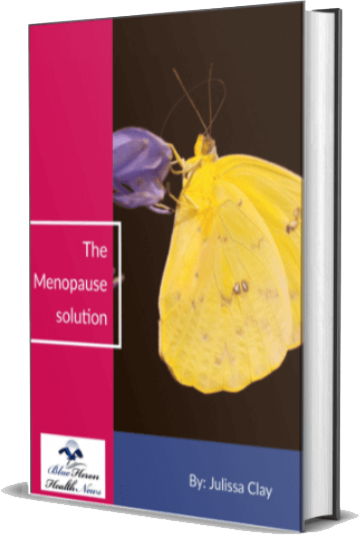
The Menopause Solution By Julissa Clay – Blue Heron Health News The Menopause Solution it can be concluded easily that you should try this program at least once if menopause is destroying your internal organs or deteriorating your physical health to a considerable level. This program can help in resolving your health issues caused by perimenopause and menopause in a completely natural manner. You can use this program without any risk as you can get your money back if you are not satisfied with its results.
How can one manage menopause with fibromyalgia?
Managing menopause with fibromyalgia can be challenging due to the overlapping symptoms of both conditions, such as pain, fatigue, sleep disturbances, and mood changes. However, with a holistic approach, women can find relief and improve their quality of life. Here are strategies to manage menopause while living with fibromyalgia:
1. Collaborate with Healthcare Providers
- Comprehensive Care: Work closely with healthcare providers, including a gynecologist, rheumatologist, and pain specialist, to develop a comprehensive treatment plan. Coordination between these specialists ensures that both menopause and fibromyalgia symptoms are addressed effectively.
- Regular Monitoring: Regular check-ups with healthcare providers can help adjust treatment plans as symptoms evolve and ensure that both conditions are managed appropriately.
2. Hormone Replacement Therapy (HRT)
- Consider HRT for Menopausal Symptoms: HRT may help alleviate menopausal symptoms such as hot flashes, night sweats, and mood swings, which can exacerbate fibromyalgia symptoms. Discuss the benefits and risks of HRT with your doctor, especially in the context of fibromyalgia.
- Tailored HRT: For women with fibromyalgia, hormone replacement therapy should be personalized to minimize side effects that might worsen pain or fatigue.
3. Pain Management
- Medications for Fibromyalgia: Medications such as pregabalin (Lyrica), duloxetine (Cymbalta), or milnacipran (Savella) are commonly prescribed for fibromyalgia to help reduce pain and improve sleep. These medications may also help alleviate some menopausal symptoms, such as mood changes and fatigue.
- Topical Pain Relievers: Topical creams and patches that contain capsaicin, lidocaine, or menthol may help reduce localized pain without systemic side effects.
4. Stress Management Techniques
- Mindfulness and Meditation: Mindfulness practices and meditation can help manage both the pain of fibromyalgia and the emotional stress of menopause. These practices reduce stress hormones, enhance emotional resilience, and improve the body’s response to pain.
- Deep Breathing Exercises: Deep breathing exercises can help calm the nervous system and reduce muscle tension, which is beneficial for managing fibromyalgia pain and menopausal stress.
- Yoga and Tai Chi: These gentle exercises combine movement with mindfulness and relaxation techniques, helping to manage pain, improve flexibility, and reduce stress. They can also help alleviate some menopausal symptoms, such as mood swings and sleep disturbances.
5. Sleep Hygiene
- Address Sleep Disturbances: Both fibromyalgia and menopause can disrupt sleep, so it’s essential to establish good sleep hygiene. Create a relaxing bedtime routine, keep the bedroom cool to manage night sweats, and use blackout curtains or white noise machines to promote restful sleep.
- Medications for Sleep: If sleep disturbances are severe, your healthcare provider may prescribe sleep aids or medications that address both insomnia and fibromyalgia, such as low-dose amitriptyline or gabapentin.
6. Regular Physical Activity
- Low-Impact Exercise: Engage in regular low-impact exercise, such as walking, swimming, or cycling. Exercise can help reduce pain, improve mood, increase energy levels, and enhance sleep. For women with fibromyalgia, gentle exercises are crucial for managing stiffness and discomfort.
- Stretching and Flexibility Exercises: Stretching exercises, like yoga or Pilates, can help improve flexibility, reduce stiffness, and ease muscle tension, which are common issues in fibromyalgia.
7. Balanced Diet and Nutrition
- Anti-Inflammatory Diet: Focus on an anti-inflammatory diet rich in fruits, vegetables, whole grains, healthy fats (such as omega-3 fatty acids), and lean proteins. This diet can help manage both fibromyalgia pain and menopausal symptoms by reducing inflammation and promoting overall health.
- Limit Sugary and Processed Foods: Reducing intake of sugar, processed foods, and refined carbohydrates can help stabilize energy levels and reduce inflammation, which may alleviate fibromyalgia pain and fatigue.
- Stay Hydrated: Proper hydration is essential for maintaining energy levels, managing headaches, and supporting overall well-being.
8. Cognitive Behavioral Therapy (CBT)
- Therapeutic Support: CBT can be highly beneficial for managing the emotional and psychological impact of both menopause and fibromyalgia. CBT helps individuals develop coping strategies for dealing with chronic pain, stress, and mood swings.
- Focus on Coping Skills: Therapy can also help women manage the frustration, anxiety, or depression that often accompanies both fibromyalgia and menopause, improving overall mental health.
9. Supplements
- Vitamin D and Calcium: Menopause increases the risk of bone loss, which can be compounded by fibromyalgia-related inactivity. Ensure adequate intake of vitamin D and calcium to support bone health.
- Magnesium: Magnesium supplements may help alleviate muscle cramps, fatigue, and sleep disturbances associated with both fibromyalgia and menopause.
- Omega-3 Fatty Acids: Omega-3 supplements can help reduce inflammation and improve mood, potentially easing symptoms of fibromyalgia and supporting mental health during menopause.
10. Heat and Cold Therapy
- Heat Therapy: Applying heat to sore muscles or joints can help ease fibromyalgia pain. Heating pads, warm baths, or hot water bottles may also help relieve muscle stiffness and promote relaxation.
- Cold Therapy: Cold packs can reduce inflammation and numb painful areas, particularly during flare-ups.
11. Social Support and Community
- Support Groups: Joining support groups for both menopause and fibromyalgia can provide a sense of community, reduce feelings of isolation, and offer practical tips for managing symptoms. Sharing experiences with others who understand these challenges can improve emotional well-being.
- Emotional Support: Lean on friends, family, and loved ones for emotional support. Regular social interactions can boost mood and reduce stress, both of which are beneficial for managing fibromyalgia and menopause.
12. Self-Care Practices
- Prioritize Self-Care: Engage in activities that promote relaxation and well-being, such as taking a warm bath, practicing relaxation techniques, reading, or engaging in hobbies that bring joy. Self-care is essential for managing the emotional and physical demands of both fibromyalgia and menopause.
- Set Realistic Expectations: Acknowledge that both conditions are chronic and may require ongoing management. Setting realistic expectations for yourself can reduce frustration and stress, helping you to focus on gradual improvements rather than quick fixes.
Conclusion
Managing menopause with fibromyalgia requires a multifaceted approach that includes medical care, lifestyle changes, and stress management techniques. By working closely with healthcare providers, engaging in regular physical activity, maintaining a healthy diet, and seeking emotional support, women can effectively manage the symptoms of both conditions and improve their overall quality of life.

The Menopause Solution™ So if you do not want to be ill-treated by the symptoms of your menopause then you must try it once. It will surely work for you. its price has been reduced only for a limited period. So you should place your order on the official website to avail of this benefit and make your life happier again.